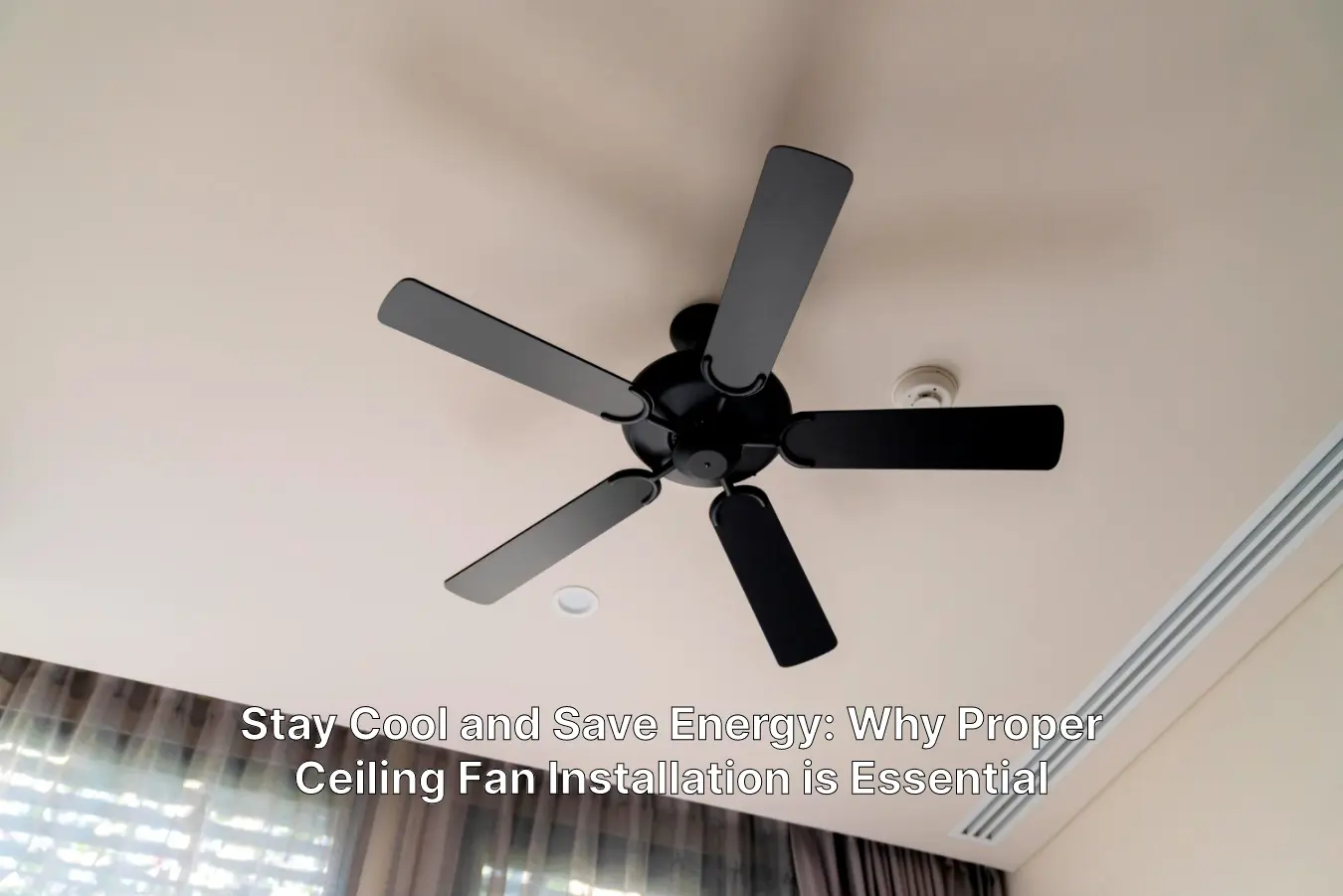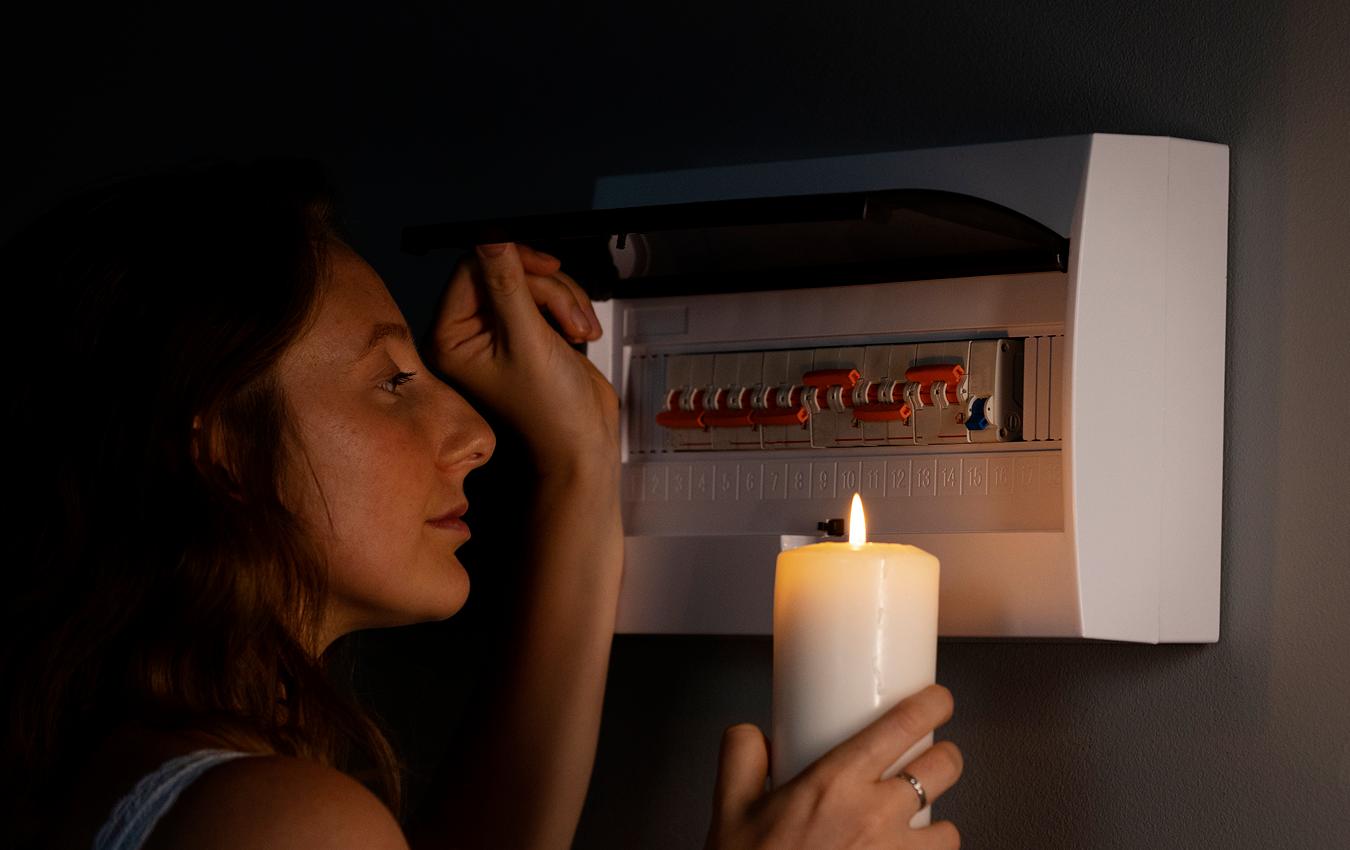Looking to beat the summer heat while also saving energy? Look no further than proper ceiling fan installation. With scorching temperatures becoming the norm during the summer months, it’s more important than ever to find ways to stay cool without breaking the bank. Ceiling fans are a cost-effective and energy-efficient solution that can make a significant difference in your comfort levels and utility bills. But here’s the catch – proper installation is key to maximizing their benefits. In this article, we’ll explore the reasons why proper ceiling fan installation is essential and how it can help you stay cool while saving energy. From understanding the ideal fan placement to the importance of balancing and maintaining your fans, we’ll provide you with all the expert tips and tricks to ensure you get the most out of your ceiling fan investment. Get ready to enjoy a refreshing breeze while keeping your energy consumption in check!
The Importance of Proper Ceiling Fan Installation
When it comes to ceiling fans, installation is not just a matter of aesthetics – it’s a matter of functionality and safety. Proper ceiling fan installation ensures that the fan operates efficiently, effectively circulating air throughout the room and providing you with a cool and comfortable environment. Improper installation can lead to a host of problems, including wobbling, noise, and reduced airflow. Additionally, a poorly installed ceiling fan can be a safety hazard, posing the risk of falling and causing injury. By taking the time to install your ceiling fan correctly, you can enjoy all the benefits it has to offer while avoiding any potential issues.
Proper installation involves several key steps, starting with choosing the right size and location for your fan. It’s important to select a fan that is appropriate for the size of your room, as a fan that is too small won’t provide adequate airflow, while a fan that is too large can create discomfort and noise. The location of your fan also plays a crucial role in its performance. Placing the fan in the center of the room and at the right height ensures optimal airflow and distribution of cool air. Additionally, proper wiring and secure mounting are essential for stability and safety. Taking the time to follow these installation guidelines will ensure that your ceiling fan functions at its best, keeping you cool and comfortable throughout the summer months.
Do you need the help of a professional electrician to properly install a ceiling fan in your home?
Premier Electrical Services will install your mains connected ceiling fan quickly and efficiently. Our electrical installers are highly experienced in installing ceiling fans and ceiling lighting in your home. Call us at 954-900-1696 or request a free quote!
Benefits of Using Ceiling Fans
Ceiling fans offer a range of benefits beyond just cooling your space. By using a ceiling fan with your air conditioner or instead of it, you can significantly reduce your energy consumption and lower your utility bills. Unlike air conditioners, ceiling fans do not cool the air, but they create a wind-chill effect that makes you feel cooler. This allows you to set your thermostat a few degrees higher without sacrificing comfort, resulting in energy savings. In fact, using a ceiling fan can reduce your cooling costs by up to 40%.
Another benefit of ceiling fans is their versatility. With adjustable speeds and reversible blades, ceiling fans can be used year-round to enhance both comfort and energy efficiency. During the summer, running the fan counterclockwise creates a cooling breeze, while in the winter, running the fan clockwise helps distribute warm air throughout the room. This dual functionality makes ceiling fans a smart investment that can be enjoyed throughout the year.
Common Mistakes in Ceiling Fan Installation
While proper ceiling fan installation is essential, it’s easy to make mistakes if you’re not familiar with the process. One common mistake is installing the fan without a ceiling fan-rated electrical box. Regular electrical boxes are not designed to support the weight and movement of a ceiling fan, which can lead to the fan falling and causing damage or injury. It’s important to use a properly rated box and ensure it is securely anchored to the ceiling.
Another common mistake is improper wiring. Ceiling fans require specific wiring connections, and it’s crucial to follow the manufacturer’s instructions or consult a professional electrician to ensure the wiring is done correctly. Incorrect wiring can result in the fan not working at all or posing a fire hazard. Additionally, failing to balance the fan blades properly can lead to wobbling, noise, and reduced performance. Balancing kits are readily available and should be used during installation to ensure smooth operation.
Understanding the Different Types of Ceiling Fans
Ceiling fans come in various types, each designed to suit different needs and preferences. The most common types include standard ceiling fans, low-profile ceiling fans, and outdoor ceiling fans.
Standard ceiling fans are the most popular option and are suitable for most indoor spaces. They typically have a down rod that extends the fan from the ceiling, allowing for optimal air circulation. Standard fans come in a wide range of styles and sizes, making it easy to find one that complements your decor.
Low-profile ceiling fans, also known as flush-mount or hugger fans, are ideal for rooms with low ceilings. These fans are mounted directly against the ceiling, eliminating the need for a down rod. While they may not have the same airflow capacity as standard fans, they are still effective in providing a cooling breeze.
Outdoor ceiling fans are specifically designed to withstand outdoor conditions, making them perfect for patios, porches, and other outdoor living spaces. These fans are built with weather-resistant materials and feature blades that can withstand moisture and humidity. Outdoor fans are available in a variety of styles, allowing you to enhance both the comfort and aesthetics of your outdoor area.
Choosing the Right Size and Location for Your Ceiling Fan
Choosing the right size and location for your ceiling fan is crucial to ensure optimal performance and comfort. To determine the appropriate fan size for your room, you’ll need to consider the square footage. For rooms up to 75 square feet, a fan with a blade span of 29 to 36 inches is recommended. Rooms between 76 and 144 square feet require a fan with a blade span of 36 to 42 inches. Larger rooms, between 144 and 225 square feet, need a fan with a blade span of 44 to 50 inches. For rooms larger than 225 square feet, a fan with a blade span of 50 to 54 inches or more is recommended.
In terms of location, it’s important to place the fan in the center of the room for optimal airflow. The fan should be installed at a minimum clearance of 7 feet from the floor and 18 inches from the nearest wall. This allows for unrestricted airflow and prevents the fan from causing any obstruction or discomfort. If you have a sloped ceiling, you’ll need to use a sloped ceiling adapter to ensure the fan is installed securely and level.
Step-by-Step Guide to Installing a Ceiling Fan
Installing a ceiling fan may seem like a daunting task, but with the right tools and instructions, it can be a straightforward process. Here is a step-by-step guide to help you install your ceiling fan properly:
1. Turn off the power
Before starting any electrical work, turn off the power at the circuit breaker to ensure your safety.
2. Assemble the fan
Follow the manufacturer’s instructions to assemble the fan, including attaching the blades, canopy, and any additional components.
3. Install the fan bracket
Attach the fan bracket to the ceiling electrical box using the provided screws. Make sure the bracket is securely fastened and level.
4. Wire the fan
Connect the fan wires to the corresponding wires in the ceiling electrical box, following the manufacturer’s instructions. Use wire connectors to secure the connections and ensure proper insulation.
5. Attach the fan motor
Lift the fan motor and align it with the bracket. Secure the motor to the bracket using the provided screws.
6. Install the fan blades
Attach the fan blades to the motor using the provided screws, making sure they are evenly spaced and balanced.
7. Install the light kit (if applicable)
If your fan has a light kit, follow the manufacturer’s instructions to install it securely.
8. Test the fan
Once the installation is complete, turn on the power and test the fan to ensure it is functioning properly. Check for any wobbling or noise and make any necessary adjustments.
Remember, if you’re unsure or uncomfortable with any step of the installation process, it’s always best to consult a professional electrician. They have the knowledge and experience to ensure a safe and proper installation.
Safety Precautions When Installing a Ceiling Fan
Safety should always be a top priority when installing a ceiling fan. Here are some important safety precautions to keep in mind:
1. Turn off the power
Before starting any electrical work, always turn off the power at the circuit breaker to prevent any risk of electric shock.
2. Use appropriate tools and equipment
Make sure you have the necessary tools and equipment for the installation, including a voltage tester, wire strippers, screwdrivers, and a ladder or step stool.
3. Follow the manufacturer’s instructions
Carefully read and follow the manufacturer’s instructions for your specific ceiling fan model. Each fan may have different installation requirements and safety guidelines.
4. Securely mount the fan
Ensure the fan is securely mounted to the ceiling using the appropriate hardware. This will prevent the fan from falling and causing injury or damage.
5. Check for electrical compatibility
Before wiring the fan, check that your electrical system can safely support the additional load. If you’re unsure, consult a professional electrician.
6. Avoid overloading circuits
If you’re installing multiple fans in the same area, make sure they are on separate circuits to prevent overloading. Overloaded circuits can cause electrical hazards and damage to your electrical system.
7. Test the fan before use
Once the installation is complete, test the fan before regular use to ensure it is working properly. Look for any signs of wobbling, noise, or electrical issues.
By following these safety precautions, you can ensure a smooth and hazard-free installation process.
Maintaining and Troubleshooting Your Ceiling Fan
Proper maintenance is essential to keep your ceiling fan running smoothly and efficiently. Regular cleaning and maintenance can prevent dust and dirt buildup, which can affect the fan’s performance and increase energy consumption. Here are some tips for maintaining and troubleshooting your ceiling fan
Clean the fan blades
Dust and dirt can accumulate on the fan blades, leading to reduced airflow and increased noise. Use a soft cloth or a vacuum cleaner with a brush attachment to remove any dust or debris from the blades. Be careful not to bend or damage the blades during cleaning.
Lubricate the fan motor
Over time, the fan motor may require lubrication to ensure smooth operation. Consult the manufacturer’s instructions for your specific fan model to determine the appropriate lubrication method and frequency.
Check the fan balance
If your fan is wobbling or making noise, it may be unbalanced. Use a balancing kit, which typically includes weights and instructions, to balance the fan blades. Balancing the fan will improve its performance and reduce noise.
Inspect the wiring
Periodically check the fan’s wiring connections to ensure they are secure and free from damage. Loose or damaged wiring can lead to electrical issues and should be addressed immediately.
Troubleshoot common issues
If your fan is not working properly, there are several common issues you can troubleshoot. Check the circuit breaker to ensure the fan’s circuit is not tripped. Verify that the fan is receiving power and that the wall switch is functioning correctly. If necessary, consult the manufacturer’s troubleshooting guide or seek professional assistance.
Regular maintenance and troubleshooting can extend the lifespan of your ceiling fan and ensure optimal performance throughout its use.
Hiring a Professional for Ceiling Fan Installation
While installing a ceiling fan can be a DIY project for some, it’s important to recognize when it’s best to hire a professional. If you’re unsure about any aspect of the installation process, lack the necessary tools or experience, or have concerns about electrical wiring, it’s advisable to seek the assistance of a licensed electrician.
A professional electrician has the expertise to properly install your ceiling fan, ensuring it operates safely and efficiently. They can also provide valuable advice on selecting the right fan for your space and address any specific requirements or challenges you may have. Hiring a professional may involve an additional cost, but it offers peace of mind and eliminates the risk of improper installation or potential safety hazards.
Conclusion: Enjoying the Benefits of a Properly Installed Ceiling Fan
Proper ceiling fan installation is essential for maximizing the benefits of this cost-effective and energy-efficient cooling solution. By choosing the right size and location for your fan, following the installation guidelines, and conducting regular maintenance, you can enjoy a refreshing breeze while saving energy and reducing your utility bills. Whether you’re looking to beat the summer heat or enhance the comfort of your outdoor living space, a properly installed ceiling fan is the key to staying cool and comfortable. So, stay cool and save energy by investing in a properly installed ceiling fan today!
Searching for help with a professional ceiling fan installation?
Premier Electrical Services provides professional ceiling fan installation and home ventilation installations. Call us at 954-900-1696 today or fill out our contact form!
Check out the latest news:
- Commercial Energy Audit: Spotting the Sources of Energy Waste
- Protect Your Fort Lauderdale Home with Whole-House Surge Protection
- Power Outages in Fort Lauderdale: How to Protect Your Home
- Preparing for a Home Rewiring Project: A Checklist for Homeowners
- 5 Critical Signs You Need a Whole-House Surge Protector





